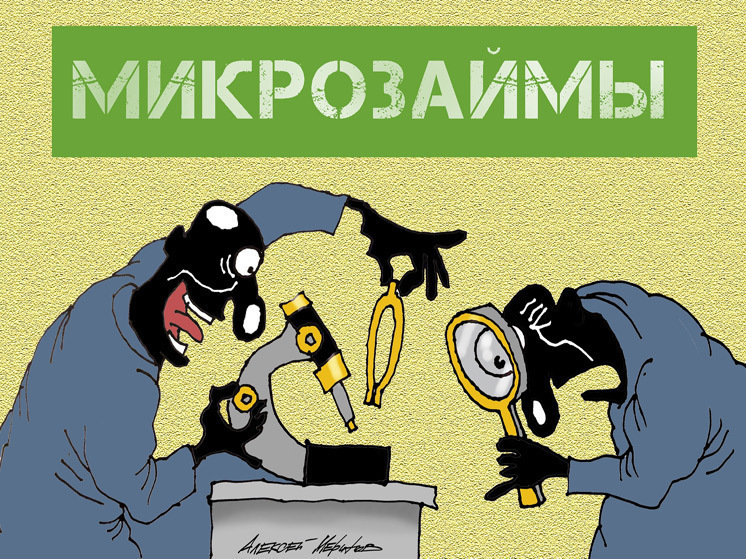It will become much more difficult to borrow before the salary of the population
Starting from July 1, the rules for the operation of microfinance organizations (MFIs) are changing towards tightening. This will affect the interests of millions of Russians who are accustomed to «shoot» at MFI points for a couple of thousand to pay. On the one hand, the interest on such payments, which many consider “predatory,” will decrease somewhat, and on the other, the requirements for borrowers will certainly become higher.

Recall the essence of the July innovations. From now on, MFIs will not be able to accrue on new loans for up to one year more than 0.8% of the debt amount per day (previously it was 1%), and the total overpayment, including interest, commissions and penalties, will not exceed 130% of the amount loan (previously it was 150%). At the same time, the maximum payment for the full cost of the loan will also decrease from 365% to 292% per annum. The terms of issuance will also apply to loans up to 10 thousand rubles for up to 15 days. It will charge no more than 1% of the special loan per day (before July 1 it was 2%), the maximum amount of interest and commissions will be no more than 15% (before July 1 — 30%).
It should be noted that in Russia, according to official data, more than 17 million citizens are clients of MFIs. Only last year their number increased by more than 3 million. At the same time, as one of the credit bureaus calculated, as of the end of 2022, over 40% of microloans have a repayment delay of more than 90 days.
Against this background, the new requirements for MFIs are a continuation of the systematic work of the Central Bank of the Russian Federation to restore order in the microcredit market. A few years ago, in this market, 1000% per annum on a microloan was the norm. Today, the rate is limited to 0.8% per day or no more than 130% per annum. Of course, such rates are also very high, but these are not those wild thousands of percent per annum.
“Clients of MFIs will definitely feel these changes,” says Lazar Badalov, Associate Professor at the Faculty of Economics of the Peoples' Friendship University of Russia. “On the one hand, there will be a decrease in overpayments, but on the other hand, MFIs will begin to refuse their borrowers more often, because they will begin to assess their financial situation more strictly.” Here you need to understand that at a rate of thousands of percent per annum, as once, MFIs were ready to distribute loans to everyone in a row — all the same, the money was more than “beaten back”, and now, when rates have dropped by almost 10 times, the selection of borrowers will surely become stricter .
Nevertheless, the expert is confident that the microfinance market will continue to grow: there will be fewer borrowers, but the amount of loans will begin to grow. According to him, there is a gradual convergence of lending conditions between banks and MFIs, which in the future will lead to some migration of customers from one financial institution to another.
The innovations that have come into force can only be welcomed, they will somewhat lighten the debt burden of borrowers, believes, for his part, Alexander Balakirev, a specialist at the law firm Intercessia. At the same time, he points out that the percentages that are now prescribed in the conditions, even taking into account the new restrictions, are still far from what banks can offer. But the peculiarity of the MFI clientele lies in the fact that banking services are not available to them for one reason or another.
“The advantages of the innovation, of course, are that this is a trend towards more “human” conditions for the borrower that even these conditions are far from the concept of a “comfortable loan”),” the source of “MK” believes. “The disadvantages for MFIs are also obvious: the potential profit is getting smaller, but the risks remain at the same level, given the low income level of the population in general and their audience in particular.”
The expert believes that the July change in conditions will not lead to an increase in demand for microloans: “For a borrower, the conditions do not change dramatically, this is still a huge interest in case of non-payment.”
The chairman of the board is much more critical about the new conditions of microloans International Confederation of Consumer Societies (ConfOP) Dmitry Yanin. “There is no need to experience any high expectations from the decision to slightly reduce the usurious rate, which is still almost 300% per annum. MFI loans have remained super-expensive,” he says. At the same time, the expert recalls that usury is prohibited in principle in developed countries, while in our country, if it is impossible to prohibit, the maximum cost of microloans should be limited to at least 30% per annum. “The volume of debt to MFIs will continue to increase, because the legitimacy of this activity remains, and the issuance of online loans is growing,” continues Yanin. And he draws a disappointing conclusion: “The decision taken is an imitation of regulation in the field of protecting the rights of financial services consumers, and it is ineffective.”


